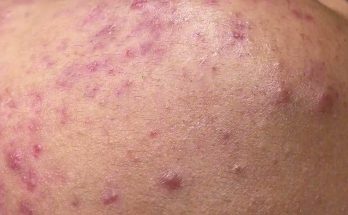How Do I Treat a Fingernail Bed Injury?
Nail bed injuries are a type of fingertip injury, which is the most common type of hand injury seen in hospital emergency rooms. They can be minor or they can also be very painful and uncomfortable, even limiting your finger movement.
Nail bed injuries can occur many ways. Often, they happen when your nail’s caught between two objects or hit by something heavy, such as being slammed in a door, having something being dropped on it, or being hit by a hammer. They can also be caused by cuts, such as from a knife or a saw.
Nail bed injuries are almost always treatable but in rare cases can cause nail deformities.
When your fingertip or your nail bed is pinched, crushed, or cut, it causes a nail bed injury.
Crushing can happen when your finger gets caught between two objects or in a doorway. Heavy objects falling on your finger can also cause injuries to the nail bed, as can being hit by a hammer.
Cuts to your fingertip, nail bed, or the tendons that you use to straighten and bend your fingertip can all cause nail bed injuries. Cuts to nerve endings in your fingertip can also cause nail bed injuries.
Nail bed injuries can cause:
- blood to pool under your nail
- your nail to crack into pieces
- your nail to be torn off
There are many types of nail bed injuries, including:
Subungual hematoma
A subungual hematoma is when blood gets trapped under your nail bed. It’s usually caused by your nail getting crushed or hit by a heavy object. Symptoms include throbbing pain and your nail turning black and blue. This usually looks like a bruise under your nail.
Nail bed laceration
A nail bed laceration is when your nail and the underlying nail bed get cut. It’s usually caused by a saw or knife but can also be caused by a crushing injury. If you have a nail bed laceration, it’s likely to bleed. You’ll be able to see the cut through your nail. As it heals, you might have a large bruise.
Nail bed avulsion
A nail bed avulsion is when your nail and part of your nail bed are pulled away from the rest of your finger. It commonly happens to your ring finger and is caused by your finger getting stuck or jammed in something. Nail bed avulsions are very painful and cause your finger to swell. Finger fractures are also common with this type of injury.
If you have a nail bed avulsion, your nail will have to be removed if it hasn’t come off during the injury.
Other injuries
There are also nail bed injuries that affect more than your nail bed, such as a fingertip fracture or amputation.
Repairing a nail bed injury will differ depending on the type of injury. If your injury is serious, your doctor might take an X-ray to check for broken bones. You may also get anesthesia so your doctor can look at your nail more closely and treat your injury without causing more pain.
Common treatment for nail bed injuries include:
- For subungual hematomas. This can be drained through a small hole in your nail, usually made with a needle. This also relieves pain and pressure. If the subungual hematoma covers more than 50 percent of your nail, you might need to have the nail removed so you can get stitches.
- For nail bed lacerations. This injury might require stitches. If the cut is serious, your nail might have to be removed. It should grow back.
- For nail bed avulsions. This injury requires removing your nail. If you also have a finger fracture, it will need to be splinted. You might need a splint for up to three weeks, depending on the seriousness of the injury.
Many injuries to your nail bed can be fully repaired. For example, your nail should return to normal after a subungual hematoma is drained. However, some severe injuries can lead to a deformed nail. This is more likely when the base of your nail bed is injured.
The most common complications of nail bed injuries are hook nail and a split nail. A hook nail occurs when your nail doesn’t have enough bony support and curves around your finger. It can be treated by removing your nail and trimming some of the nail matrix, which is the tissue your nail rests on.
A split nail happens because your nail can’t grow over scar tissue. It’s treated by removing the nail that’s already grown and treating or removing the scar so new nail can grow properly.
If all or part of your nail is removed, it will grow back. It takes approximately a week for a fingernail to start growing back and three to six months for it to totally grow back. After the nail’s removed, you’ll need to keep your fingertip covered while your nail starts to grow back.
Many nail bed injuries require a doctor. However, there are several steps you should take before seeing a doctor when you injure your nail bed:
- Remove all jewelry from your hands. If your finger’s too swollen to get a ring off, call your doctor immediately.
- Gently wash the injury, especially if it’s bleeding.
- Apply a bandage if necessary.
If your injury is minor, you may be able to treat it at home. For example, if your subungual hematoma is small (one-fourth the size of your nail or less), you don’t need to see a doctor. In addition, if your nail is completely removed and the nail bed or rest of your finger isn’t injured, you may not need to see a doctor.
If you have a deep cut in your nail bed, you should see a doctor, especially if it doesn’t stop bleeding. Subungual hematomas that cover more than a quarter of your nail also need medical treatment.
If your finger is very swollen or painful, or if you think it’s fractured, you should see your doctor for an evaluation.
Nail pitting may appear as depressions or dimples in your fingernails or toenails. It’s common in people with psoriatic arthritis. Oral and topical medications and lifestyle changes can help treat nail pitting.
If you’ve ever noticed small depressions in your fingernails or toenails, you may have experienced nail pitting. It can happen for a number of reasons and is often related to nail psoriasis.
You may also have discoloration and abnormal growth with this condition. While treatment can be challenging, some options include corticosteroid injections and supplements.
Read on to learn more about nail pitting, what causes it, and available treatments.
Nail pitting may show up as shallow or deep holes in your nails. It can happen on your fingernails or toenails. The pitting can look like white spots or marks.
If your nail pitting is related toTrusted Source nail psoriasis, as it often is, you may also experience:
- changes to the normal shape (deformation)
- thickening
- changes in nail color (discoloration)
People with nail psoriasis may also experience loose nails that separate from their nail beds, which is also called onycholysis. In the most severe cases, nail psoriasis can cause your nails to crumble.
You may experience nail psoriasis with or without other psoriasis symptoms. Other potential symptoms includeTrusted Source:
- scaly, discolored patches of skin
- dry, cracked, or bleeding skin
- itching or burning skin
- stiff or swollen joints
One of the most common causes of nail pitting is psoriasis. Up to 50% of people who have psoriasis experience changes in their nails, and you’re more likely to get it if you’re over age 40Trusted Source.
According to research, there may be a link between nail pitting and the severity of psoriasis. In one older 2013 study, 34.2%Trusted Source of people with mild psoriasis also experienced nail pitting. In people who had severe, longer lasting cases of psoriasis, nail pitting was present 47.6%Trusted Source of the time.
Other causes of nail pitting that are not related to psoriasis include:
- Connective tissue disorders: Examples include Reiter’s syndrome (a form of reactive arthritis) and osteoarthritis.
- Autoimmune conditions: Some of these include alopecia areata, sarcoidosis, and pemphigus vulgaris.
- Incontinentia pigmenti: This is a genetic disorder affecting the hair, skin, nails, teeth, and central nervous system.
- Dermatitis: Examples include atopic and contact dermatitis.
If you notice pitting in your nails, it’s a good idea to contact a doctor.
At your appointment, your doctor will assessTrusted Source your medical history and perform a physical exam. Be sure to share any symptoms you may be experiencing, as this can help guide them to a diagnosis.
They may also perform a skin biopsy. This test is done by taking a small sample of your skin or nails and looking at it under a microscope. Your doctor will likely take the sample after applying a local anesthetic, so this procedure shouldn’t hurt.
Treating nail pitting can be difficult because the pits are formed as your nail grows. Topical medications are unable to easily reach through the nail bed, so your doctor may consider corticosteroid injections into your nail beds.
Another option is to use phototherapy or light therapy on the affected nails.
Immunosuppressant medications, such as cyclosporine (Neoral) and methotrexate (Trexall), are also options. However, they typically aren’t recommended if you only have nail pitting due to potential side effects. Some doctors may recommend taking vitamin D3 supplements.
Treating nail pitting is often a long-term process that doesn’t always have the best results. Your doctor can guide you through the process in order to find something that works.
Treatment for nail pitting and other nail issues is often a long process. In some cases, treatment isn’t always effective, so it’s important that you try to avoid triggers that make pitting worse.
If you’re diagnosed with nail psoriasis, the outlook is varied. Psoriasis is a chronic condition that tends to flare up at different times of your life for reasons like stress or illness.
People who have nail psoriasis often deal with physical and psychological stress related to their condition. If you’re feeling stressed or upset about your diagnosis, discuss these feelings with your doctor. They can provide guidance and other resources for support.
You should also contact your doctor if you notice thickening of a nail or separation from the nail bed. This may mean you have a fungal infection that needs treatment.
You may not be able to prevent pitting in your nails, but you can reduce your risk of worsening symptoms. Keep your nails healthy by:
- staying hydrated
- eating well
- taking vitamin B and zinc supplements
You can also avoid triggers by:
- clipping your nails as short as you can
- wearing gloves if you’re working with your hands
- avoiding manicures
- using a moisturizer or cream
Can stress cause nail pitting?
If psoriasis is causing nail symptoms, stress can exacerbate the condition and cause pitting, ridges, and shredding.
What vitamin deficiency causes nail pitting?
Mineral deficiencies, like zinc deficiency, can cause white spots to develop on your nails.
Should I be worried about dents in my nails?
While nail pitting isn’t always something to worry about, it may be a sign of an underlying condition like psoriasis, dermatitis, and autoimmune conditions. If you have nail pitting, it’s usually a good idea to contact a doctor.
If you have nail pitting, you might notice depressions or dimples in your fingernails or toenails.
One of the most common causes is psoriasis. However, autoimmune conditions, deficiencies, and dermatitis can also cause nail symptoms.
Your doctor can diagnose the underlying cause of nail pitting. Medications, topical medications, and lifestyle changes can help treat your symptoms.


